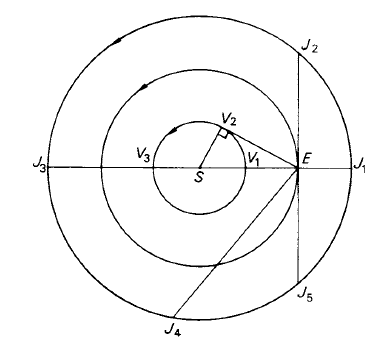
تاريخ الفيزياء

علماء الفيزياء


الفيزياء الكلاسيكية

الميكانيك

الديناميكا الحرارية


الكهربائية والمغناطيسية

الكهربائية

المغناطيسية

الكهرومغناطيسية


علم البصريات

تاريخ علم البصريات

الضوء

مواضيع عامة في علم البصريات

الصوت


الفيزياء الحديثة


النظرية النسبية

النظرية النسبية الخاصة

النظرية النسبية العامة

مواضيع عامة في النظرية النسبية

ميكانيكا الكم

الفيزياء الذرية

الفيزياء الجزيئية


الفيزياء النووية

مواضيع عامة في الفيزياء النووية

النشاط الاشعاعي


فيزياء الحالة الصلبة

الموصلات

أشباه الموصلات

العوازل

مواضيع عامة في الفيزياء الصلبة

فيزياء الجوامد


الليزر

أنواع الليزر

بعض تطبيقات الليزر

مواضيع عامة في الليزر


علم الفلك

تاريخ وعلماء علم الفلك

الثقوب السوداء


المجموعة الشمسية

الشمس

كوكب عطارد

كوكب الزهرة

كوكب الأرض

كوكب المريخ

كوكب المشتري

كوكب زحل

كوكب أورانوس

كوكب نبتون

كوكب بلوتو

القمر

كواكب ومواضيع اخرى

مواضيع عامة في علم الفلك

النجوم

البلازما

الألكترونيات

خواص المادة


الطاقة البديلة

الطاقة الشمسية

مواضيع عامة في الطاقة البديلة

المد والجزر

فيزياء الجسيمات


الفيزياء والعلوم الأخرى

الفيزياء الكيميائية

الفيزياء الرياضية

الفيزياء الحيوية

الفيزياء العامة


مواضيع عامة في الفيزياء

تجارب فيزيائية

مصطلحات وتعاريف فيزيائية

وحدات القياس الفيزيائية

طرائف الفيزياء

مواضيع اخرى
Planetary configurations
المؤلف:
A. Roy, D. Clarke
المصدر:
Astronomy - Principles and Practice 4th ed
الجزء والصفحة:
p 154
7-8-2020
2167
Planetary configurations
At this stage it is convenient to define a number of terms frequently used in describing planetary configurations with respect to the Sun and the Earth. In figure 1, E refers to the Earth and S represents the Sun.
Planets are divided into two classes: those whose orbits lie within the Earth’s orbit are called

Figure 1. Planetary configurations.
inferior planets; those with orbits outside the Earth’s orbit are superior planets. Thus, in figure 1, the letters V and J refer respectively to an inferior and a superior planet.
We assume for the moment that planets move round the Sun in circular, coplanar orbits. The actual planetary orbits are ellipses of low eccentricity in planes inclined only a few degrees from each other so that the terms defined below are still applicable in the real cases.
A superior planet on the observer’s meridian at apparent midnight is said to be in opposition (configuration SE J1). It is obvious that an inferior planet cannot ever be in opposition.
A planet whose direction is the same as that of the Sun is said to be in conjunction (configurations EV1S, ESV3, ESJ3): an inferior planet can be in superior conjunction (configuration ESV3) or in inferior conjunction (configuration EV1S).
The angle the geocentric radius vector of the planet makes with the Sun’s geocentric radius vector is called the planet’s elongation (for example, angle SEV2 or SE J4). It is obvious that an inferior planet has zero elongation when it is in conjunction and maximum elongation (less than 90◦) when its geocentric radius vector is tangential to its orbit (configuration SEV2). The elongation of a superior planet can vary from zero (configuration SE J3) to 180◦ (configuration SE J1). When its elongation is 90◦, it is said to be in quadrature (configurations SE J2 and SE J5). These quadratures are distinguished by adding eastern or western. In figure 1, the north pole of the ecliptic is directed out of the plane of the paper so that J5 and J2 are in eastern and western quadratures respectively.
Another useful term relating the position of a planet with respect to the Sun and Earth is that of phase angle. This angle is defined by the Sun, the planet and the Earth. For the inferior planets, it can take a value in the range 0◦ to 180◦. In figure 1, the configuration SV2E depicts a phase angle of 90◦. For superior planets, the phase angle lies in the range 0◦ to a maximum value, this being determined according to the distance of the planet from the Sun.
 الاكثر قراءة في مواضيع عامة في علم الفلك
الاكثر قراءة في مواضيع عامة في علم الفلك
 اخر الاخبار
اخر الاخبار
اخبار العتبة العباسية المقدسة

الآخبار الصحية















 قسم الشؤون الفكرية يصدر كتاباً يوثق تاريخ السدانة في العتبة العباسية المقدسة
قسم الشؤون الفكرية يصدر كتاباً يوثق تاريخ السدانة في العتبة العباسية المقدسة "المهمة".. إصدار قصصي يوثّق القصص الفائزة في مسابقة فتوى الدفاع المقدسة للقصة القصيرة
"المهمة".. إصدار قصصي يوثّق القصص الفائزة في مسابقة فتوى الدفاع المقدسة للقصة القصيرة (نوافذ).. إصدار أدبي يوثق القصص الفائزة في مسابقة الإمام العسكري (عليه السلام)
(نوافذ).. إصدار أدبي يوثق القصص الفائزة في مسابقة الإمام العسكري (عليه السلام)


















